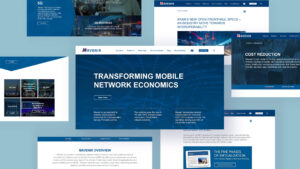Every business and brand should understand how their SEO efforts can work in harmony with their email marketing strategy to drive results by enhancing both brand awareness and lead generation. Integrating your SEO strategy with your email marketing campaigns will generate results by enriching content and boosting engagement with your audience.
SEO and email marketing methods both funnel people to a brand’s website to convert them; however, they are often used as separate marketing strategies. Unifying these strategies lets you leverage written content across channels and take your marketing efforts to the next level.
Resource: If you need SEO help, connect with our partner agency, Proper Leap
Five ways you can unify SEO and email marketing are as follows:
1. Align your keywords and phrases
Align your keywords and phrases by using relevant industry-related keywords in the main body of the email while also creating attractive, readable layouts. Additionally, make sure you use keywords for your onsite content in a natural way that caters to search engines and readers since your onsite content plays a critical part in any successful SEO campaign.
Tip: When doing your keyword research, do not underestimate the power of long-tail keywords. Long-tail keywords can be much more descriptive and deliver a more concise, targeted level of traffic.
Also, align your content calendars for email marketing and onsite content to better attract consumers who are researching your products and are ready to convert.
2. Add UTM parameters to links
Add UTM parameters to links in your emails to monitor traffic sources, track month-over-month improvements, and evaluate what type of email marketing campaigns are working. UTM is a module that helps you track the effectiveness of your online marketing campaigns by sending information about link clicks to Google Analytics.
Resource: You can create and add UTM parameters very easily using Google’s Dev Tool – Campaign URL Builder.
Once you have setup and implemented the UTM links you can then track which links your subscribers are clicking by:
- Logging in to Google Analytics
- Clicking on Acquisition > All Traffic > Channels
- You should see the assigned “campaign source” name listed
- Clicking on that will then take you to all the metrics related to it
Tip: We also use TinyURL to shorten our UTM links for when we don’t use as a hyperlink.
3. Recycle your emails into blogs
Recycle your emails into blogs so Google can index them, and your email campaigns will have a positive impact on your website’s rankings. Repurposing your content will also save you time since creating and writing new content can take a while.
Repurposing your email content can be done by:
- For longer newsletters, turn them into blog posts – you can use the same content, implement the relevant links, and then share the blog on social media.
- For shorter email campaigns, find a recurring theme and group them all in a singular blog post?
When you recycle your newsletters into blog posts, you are letting those who don’t subscribe to your newsletter an opportunity to see what they’re missing. You’re also creating more quality content for Google to catalog!
4. Archive and canonicalize your emails
Archive and canonicalize your emails by adding a canonical tag to your newsletters that points towards your blog page. If you run frequent newsletters and regular email marketing campaigns, then you probably want to archive any older posts on your website to decrease the attrition rate and gain new subscribers.
When you canonicalize a URL, you’re telling search engines which URL they should index when multiple pages with similar content exist. You can do this by inserting the canonical tag into the <head> of your newsletter archive page, with the link to your blog page.
Resource: If you use SEO plugins like Rank Math you can read how to setup a canonical URL.
5. Encourage engagement and link sharing
Encourage engagement and link sharing by directing your email audience to pages that allow commenting and link sharing to social media platforms. The activity generated from your email will help improve your Google ranking over time since any shared links back to the content within your email will tick some of the ranking factors that Google looks for.
You can encourage engagement with calls to action in your email by doing the following:
- Ask your email subscribers to leave a comment at the bottom of your blog with their opinion and any tips/tricks surrounding the topic.
- Implement buttons to your social channels such as Twitter, Facebook, and Instagram and encourage them to like, share, and comment on those channels as well.
You may find that some of your subscribers run their own blog and therefore increase the potential for more influencers to include inbound links back to your site. If your email marketing campaign is eye-catching and grabs the reader’s attention because it’s branded well, it will also improve opportunities for others to share your content actively.
Related: Read our post on how to combine your other marketing efforts with email marketing that touches on branding and social media too
Photo by Nail Gilfanov on Unsplash



















